29 February 2008
Test answers
The Soil Texture Triangle is on Marsh Page 96, and a nice explanation of how it applies to a large landscape on p. 101
The hydrograph from class on Thursday is on p. 157
Yes, you should read ANJEC Chapter 1
Best Marsh Chapters to read;
1,4,5,7,8,9,10,21
Other Marsh Chapters to look at:
6, 15, 17, 21
Impervious surface
Zoning hearing board chairman David Malinowski said the variances were justified. One of the variances allows the church to increase the percentage of impervious (hard pavement) surface on the five-acre property, from 22.3 to 31.5 percent. The other allows the continuation of some encroachments into front yards along Makefield and Sutphin roads.
a pretty new video about a pretty old map
 The Library of Congress held a special ceremony last year in which they dedicated the 1507 Waldseemuller World Map. The ceremony was attended by German Chancellor Merkel, who spoke as well. The video captures this as an historic moment because Germany was allowing us to acquire something that is so central to our history:
The Library of Congress held a special ceremony last year in which they dedicated the 1507 Waldseemuller World Map. The ceremony was attended by German Chancellor Merkel, who spoke as well. The video captures this as an historic moment because Germany was allowing us to acquire something that is so central to our history:The 1507 world map by Martin Waldseemuller is often called "America's Birth Certificate," because it is the first document on which the name "America" appears. German Chancellor Angela Merkel officially transferred the map to the Library of Congress in April 2007. House Majority Leader Steny Hoyer accepted the map on behalf of the U.S. government, and Merkel, Hoyer and Librarian of Congress James H. Billington delivered remarks at the ceremony. The Library of Congress had purchased the map for $10 million in 2003.This map inspired the plot for The Perfect Fake. It also was one of the highlights of the tour of the LoC map vault. Although there was a contingent on the tour that was pretty excited by the old Sanborne map of Ebbets Field.

28 February 2008
Map Designer
27 February 2008
Planning Board Meetings
If you attend a meeting on Livingston Avenue, you aren't completing Assignment 1 properly. (That's the County Planning Board)
Different ways of looking at Elizabeth
A fairly upbeat example was in the Star-Ledger which reported on some Elizabeth HS students who made a video about the FAA's changing policies regarding airport noise around Newark airport. It is a great example of how younger people can see old problems in new ways. It also a great example of how a small non-profit, like Future City, can spark a larger conversation.
Michelle Doran McBean, CEO of the Elizabeth-based nonprofit Future City Inc., provided equip ment and guidance for the film and saw the girls' enthusiasm build firsthand. She now hopes the film can spread their passion.Here is a less positive example. Someone has mapped out some of the larger public housing projects in Elizabeth complete with photos. Some of the photos look clearly out of date (and the website admits enough if you dig a little) but it is an interesting example of how one person can assemble information in a way that seems definitive to the casual viewer. As part of a larger website called Urban Decay, these photos could easily be construed as having a specific message about life in Elizabeth, but the website seems underdeveloped in a way that makes it hard to derive any singular message."I think there are many other young people just like the three of them who would be equally interested and engaged if provided with the opportunity and support," said McBean, whose organization has an ongoing campaign to raise awareness of air pollution and other environmental issues in the Newark/Elizabeth "aerotropolis."
"Hopefully, they can serve as a nexus to bring people together on this issue," she said.
26 February 2008
Im's IMS
One that serves an interesting policy role as a PPGIS project is his Legislative District Data Book On-Line with the Center for Government Services. He also has some YouTube videos that help work through this application.
 Another high-profile public policy application was the NJ Highlands Council Interactive Map that is offered as a genuine effort to make people more familiar with the data behind the policy debates and lend some sense of transparency to a charged political process.
Another high-profile public policy application was the NJ Highlands Council Interactive Map that is offered as a genuine effort to make people more familiar with the data behind the policy debates and lend some sense of transparency to a charged political process.But some of the Internet Mapping project support much smaller programs.
He has launched a web site called IMRivers.Com designed to help watershed and stream groups connect with this new technology. The taglines are “Interactive Maps for Your Watershed” and "Empowering Environmental Communities with Interactive Mapping". This has resulted in about 20 different river or stream mapping custom apps that show the potential for this as an increasingly bottom-up technology.
 As part of the Bike N' Walk Blog, Im has mapped bike crashes in the New Brunswick area and mapped a route for the Rutgers Cycling Team.
As part of the Bike N' Walk Blog, Im has mapped bike crashes in the New Brunswick area and mapped a route for the Rutgers Cycling Team.
 Custom map apps are changing expectations about mapping online. And they are even changing expectations about what people expect from the navigation systems in their cars.
Custom map apps are changing expectations about mapping online. And they are even changing expectations about what people expect from the navigation systems in their cars.The Most Environmentally Friendly Tree
 Slate Magazine looked into finding the most environmentally-friendly trees. The answer focuses mostly on limiting your carbon footprint through carbon-sequestration instead of other environmental issues (like, is it native?). Of course, the answer turns out to still be different for different places. But, after playing the game and finding out about new high-sequestration trees, they drop in a real kicker at the end:
Slate Magazine looked into finding the most environmentally-friendly trees. The answer focuses mostly on limiting your carbon footprint through carbon-sequestration instead of other environmental issues (like, is it native?). Of course, the answer turns out to still be different for different places. But, after playing the game and finding out about new high-sequestration trees, they drop in a real kicker at the end:Of course, if you have enough property to plant six yellow poplars in the first place, your carbon footprint may be a lot higher than that.
There is no mention of how Truffula trees hold up.
25 February 2008
Lecture Announcement
4pm Wednesday, Room 110 CDL, Cook-Douglass Campus
Rutgers University
This week we will continue our focus on alumni of Rutgers' LA program. We will have two speakers who have become leaders in restoration ecology. Each will present some of their current work and then will participate in a discussion about their career paths and recommendations for our current and recent students.
Carl Alderson CLA
Coastal Restoration Specialist
NOAA Restoration Center - Sandy Hook Office JJ Howard National Marine Fisheries Science Center
http://www.nmfs.noaa.gov/habitat/restoration/
Bill Shadel
Habitat Restoration Director
American Littoral Society
www.littoralsociety.org (although the link wasn't working for me today)
GPS trouble in Secaucus
"They come down this street sometimes and they take wires down. If they get caught, they gotta pay to get them put back up," Sanzari said. "They all come out with the map and say: "But MapQuest says I can go this way!'"So, is MapQuest liable? The good news is that while paper maps can take years to capture this, companies like TeleAtlas are pretty good at making these changes rapidly.
Internet Mapping Comparison
Flash Earth has created a site that lets you zoom in and flip between the photos provided by Google, Microsoft, Ask, Yahoo! and even (at a regional scale) NASA and OpenLayer.
For instance, the Dag Hammerskjold School in East Brunswick is shown in Microsoft and ask.com as under construction, shown before construction in Google, and shown before (but with a different photo) at Yahoo. Another example is Yankee Stadium, in the Bronx. Here you can clearly see that Microsoft and Ask have newer imagery (after construction began on the new Stadium) but that Google and Yahoo both have photos taken while a game was in progress - which has to be a fairly deliberate decision.
Compare!
24 February 2008
GREs and grad schools
So, make sure you take your GRE. But also make sure that you prepare for you GRE. Taking it blind rarely works out well.
A big planning board meeting for Metropark South
(Note for Planning Students: Assuming that they really happen, these would both be pre-approved Planning Board meetings.)
23 February 2008
Weekend Photos: Santa Cruz Boardwalk



 This was where they made The Lost Boys, Keifer Sutherland's big break-through film.
This was where they made The Lost Boys, Keifer Sutherland's big break-through film.22 February 2008
Big Wins at the Garden Show
The Home News and Tribune described the 2,200 square foot student entry as "one of the most impressive efforts." They also quoted one of the students:
"The greatest part about it is to see the look on the people's faces when they realize that college students did this," said Dave Warrick, one of the project participants. "Everybody else here is professional."As Undergraduate Program Director for Environmental Planning and Design I should point out that this class has been quickly becoming a popular outlet for students of many major, but has become a particularly notable class for out Landscape Industry Option students.
Urban forestry mapping
"If you don't even know what you have, you can't make any decisions," said Jarlath O'Neil-Dunne, a geospatial analyst with the team. "It wasn't that people didn't want to plant trees or didn't want a tree canopy program. But they needed the hard data to make decisions. That's where we came in."
21 February 2008
Web Soil Survey
But I also saw that RGIS has developed a Penn State SoilsMap online tool that works very nicely. You can zoom in to see the soils associations and then use the "i" tool to get specifics about the soils.


20 February 2008
3 Landscapes: Brand and Miller
- Bahai Terraces of thee Shrine of the Báb
- Central Park
- Warinanco Park in Elizabeth, NJ
Ryan Miller
- J. Paul Getty Center
- Berchtesgaden in Southern Germany
- Ciudad de las Artes y de las Ciencias in Valencia, Spain
DeBoer Travel Lectures
Stan explained how a kibbutz works and described his time at the fairly progressive Kibbutz Lotav. In particular he learned a lot about their alternative building practices and eco-village project.
Ryan traveled to Berlin. He studied the ways that the city has been repeatedly remade to reflect the images of the German nation. Some key landmarks for illustrating the symbology and imagery include the Brandenburg Gates, the Reichstag, the Berlin Wall and its art, and the Memorial to the Murdered Jews of Europe.
Geomatics Maps and Visualization
 Today in Intermediate Environmental Geomatics we talked some about thinking about maps. I mentioned the blog Strange Maps, which I consider to be a great resource for creative thinking about maps. The BBQ sauce map above is a great example of their finds. But I also realized that I had previously posted a list of sites for LA students that included some other good maps. Exploring and looking is key to making your own good graphics and maps.
Today in Intermediate Environmental Geomatics we talked some about thinking about maps. I mentioned the blog Strange Maps, which I consider to be a great resource for creative thinking about maps. The BBQ sauce map above is a great example of their finds. But I also realized that I had previously posted a list of sites for LA students that included some other good maps. Exploring and looking is key to making your own good graphics and maps.
Cities for exercise
19 February 2008
Contested Territory
18 February 2008
Presidents' Day Photo
14 February 2008
NY Times letters on the Hudson River Park
Common Lecture: 2007 DeBoer Travel Prize Reports
The Onion omits the landscape architects
13 February 2008
Jack Carmen on Therapeutic Gardens
Roger Ulrich found that hospital patients with a view of nature had:
- Shorter Stays
- Less pain
- Fewer minor complications
- Better emotional well-being
Claire Cooper Marcus and Marni Barnes wrote an important book for landscape architects called Healing Gardens. Other forces (or indicators?) for change include Bill Thomas and the Eden Alternative.
More and more are moving towards CCRCs (Continuing Care Retirement Communities)
- 274 in the 80s
- 2,240 in 2005
Depending on the age and their conditions, these populations require a variety of design concerns that require new sensitivity like grade changes, toxic plants, landmarks for wayfinding, boundaries, and familiar fixtures like fountains and benches.
Aside from those at CCRSs, a great public example was the Portland Memory Garden. It is becoming a model as designers (and retirees) realize the growing need for therapeutic landscapes.
Scientific Art on Campus
It is at the Rutgers Student Center, College Ave Campus (Second Floor, Art Display Case) and is comprised of a series of Scientific Sculptures; they are on display from Feb 18-22.
The announcement I saw summarized it more or less like this:
Julian Voss-Andreae has developed a novel kind of sculpture based upon the structure of proteins. His large-scale, outdoor sculptures are designed to tell unique stories about hemoglobin, collagen, and other structures essential to life. These sculptures are based upon information contained in the Protein Data Bank, the world-wide repository for nucleic acid and protein structures based at Rutgers and UC-San Diego.
12 February 2008
11 February 2008
Nice topos
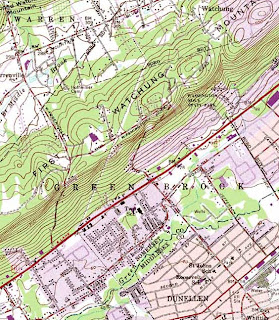
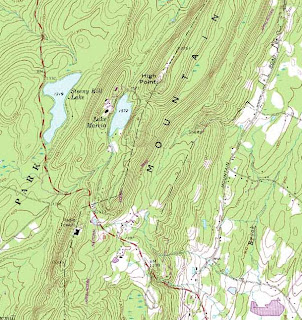
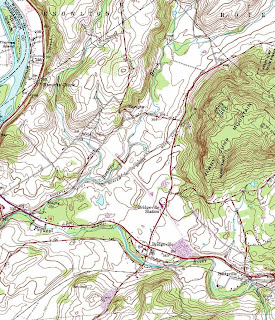
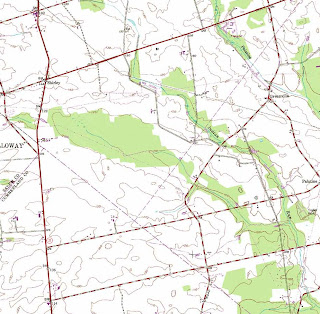
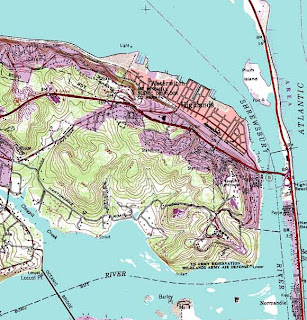
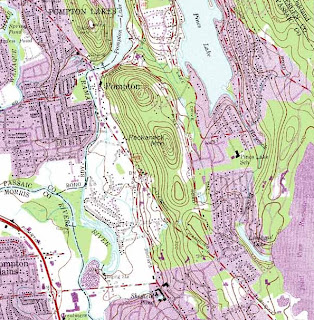
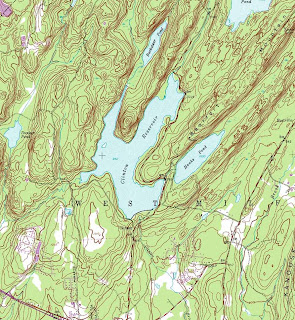

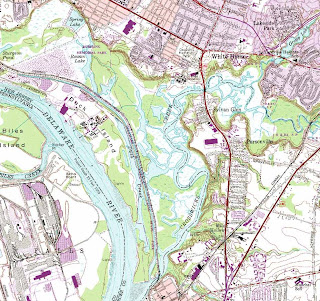 A special thanks goes out to Mike Siegel and the Rutgers Cartography Lab. A complete collection of Digital Raster Graphics for all of New Jersey are available online for free. It is a great resource for students and for pros.
A special thanks goes out to Mike Siegel and the Rutgers Cartography Lab. A complete collection of Digital Raster Graphics for all of New Jersey are available online for free. It is a great resource for students and for pros.
Better legends for transparency mapping effects
10 February 2008
Common Lecture: Thereaputic Gardens
John Paul Carman, FASLA
Wednesday, 4PM in Room 110 Cook Douglass Lecture Hall, Cook Campus
Jack Carman is the first of several alumni, of the Rutgers Department of Landscape Architecture, who will be featured in our speaker series this semester. Jack is well known and highly respected for his active leadership in the discipline and for his work in therapeutic gardens.
He is the owner, founder and president of Design for Generations, LLC, and has over 20 years experience as a landscape architect. He is a nationally recognized expert in the design of therapeutic gardens, particularly Alzheimer's gardens and outdoor environments for senior living communities.
When Jack was nominated and selected to become a Class of 2005 Fellow of ASLA, he was elected in the category of Service to the Profession. He has been an active leader in both the state and national organizations.
A visit to his firm's website
(http://www.designforgenerations.com/profile.php) illustrates the commitment to excellent design based on thoughtful site analysis and his philosophy "to meet the physical, social, psychological and spiritual needs of individuals enjoying the garden". Jack's presentation will combine his reflections on the development of his specialization in therapeutic gardens and his career path in landscape architecture.
An Easy $2,500?
Dear Student
Can You Make Rutgers Carbon Neutral By 2030?
The Rutgers Energy Institute (REI) will offer four awards of up to
$2,500 to undergraduate students who develop the best plans to reduce or
eliminate carbon emissions of the New Brunswick Campus.
Learn more about the Energy Contest at the Information Session on
Tuesday.
Get energy facts, ask questions and form teams!
FREE FOOD!
Where: Cook Campus Center, Multipurpose Room B
When: Tuesday, February 12, 7:00-9:00 PM
Visit the Rutgers Energy Institute website for more contest information,
including full submission requirements.
http://ruei.rutgers.edu/
09 February 2008
Seeing climate change

Andrea Cochran in LAM
By the way, Ms. Cochran will be speaking here at Rutgers on April 16th. Mark your calendars now.
Trulia Hindsight
http://hindsight.trulia.com/
Point of information: Trulia.com is a real estate information website. But it is hard to see how that might be impacting this application.
08 February 2008
Q&A with David Suzuki and Michael Oppenheimer
Rutgers students will find that this talk is conveniently close to the Dinky train station.
07 February 2008
NJ Environmental Priorities
 NJ.com has a blog entry by Bill Wolfe offers up a list of Top 10 priorities for the NJ Environment that he hoped to hear in NJ DEP Commissioner Lisa Jackson's 2008 comments to the legislature. While there are several intriguing items on his list, I saw his inclusion of Green Infrastructure on #8 as particularly interesting. I just wish he had elaborated on the idea more. Great list.
NJ.com has a blog entry by Bill Wolfe offers up a list of Top 10 priorities for the NJ Environment that he hoped to hear in NJ DEP Commissioner Lisa Jackson's 2008 comments to the legislature. While there are several intriguing items on his list, I saw his inclusion of Green Infrastructure on #8 as particularly interesting. I just wish he had elaborated on the idea more. Great list.(The photo is of the Pequest River as Green Infrastructure in/near Buttzville)
Revelling in new development
 The Atlantic City Planning Board has given final approvals for construction to begin on a new casino. Despite the downturn in the markets, the $2 Billion development will start with at least 1,800 rooms and will eventually top out at 3,800 rooms.
The Atlantic City Planning Board has given final approvals for construction to begin on a new casino. Despite the downturn in the markets, the $2 Billion development will start with at least 1,800 rooms and will eventually top out at 3,800 rooms.
06 February 2008
Urban outreach
 Rutgers is gaining visibility for its efforts to reach out in the urban centers of NJ. The NJ Agricultural Experiment Station has established the Ye2s Center in Newark to help at-risk teens. Not what you first think of when you hear the name Ag Experiment, but it makes sense when you think about the mission of a Land Grant institution in an urban state like New Jersey.
Rutgers is gaining visibility for its efforts to reach out in the urban centers of NJ. The NJ Agricultural Experiment Station has established the Ye2s Center in Newark to help at-risk teens. Not what you first think of when you hear the name Ag Experiment, but it makes sense when you think about the mission of a Land Grant institution in an urban state like New Jersey.
Common Lecture: Osaka Summer Trip
View Larger Map
Meeting: Southeast NJ's Economy: Competition for Land & Resources
February 14, 2008
The Richard Stockton College - Carnegie Library Center
35 S. Dr. MLK Jr. Blvd.
Atlantic City, NJ 08401
8:30am - 11:00am
PlanSmart NJ invites you to register for this conference to be held on the morning of February 14, 2008 in Atlantic City. (Required parking permit will be supplied upon registration.)
"Southeast NJ's Economy: Competition for Land & Resources" brings together the public, private and nonprofit sectors to examine the future of Ocean, Atlantic, Cape May, and Cumberland counties through the lens of a revolutionary planning framework developed by PlanSmart NJ as part of its Smart Growth Economy Project.
Speakers include:
Karen Alexander, NJ Utilities Authority
Tom Carver, Casino Reinvestment Development Authority
Rick Dovey, Atlantic County Utility Authority
W. Felder, Ph.D., FAA William J. Hughes Technical Center (invited)
Jim Florio, Florio Perrucci
Sharon Gordon, SJ Transportation Authority
Ed Graham, SJ Gas
Bert Lopez, Hispanic Alliance of Atlantic County
Rod Ritchie, SJ Builders Association
Dr. Herman Saatkamp, Richard Stockton College
Sharon Schulman, William J. Hughes Center for Public Policy
Michael Willmann, WMSH
05 February 2008
More publicity for the EP&D program
 For students seeking ways to impact the environment, I (obviously) think that Environmental Planning and Design is a great place to look. The mixing of science and design, people and plants, and large and small makes it especially appealing to those of us who have a hard time working on an isolated subset of a problem. It has both some very long-term and some immediate gratification. It also looks good in the local paper.
For students seeking ways to impact the environment, I (obviously) think that Environmental Planning and Design is a great place to look. The mixing of science and design, people and plants, and large and small makes it especially appealing to those of us who have a hard time working on an isolated subset of a problem. It has both some very long-term and some immediate gratification. It also looks good in the local paper.This weekend the Star-Ledger ran a special section called Outlook, that included an article on college opportunities for students interest in the environment. I am a little disappointed that they only wrote about our LA program and didn't highlight some of the green work our Geomatics and Planning students have pursued. But there are so many stories for them to tell and so few inches of column space.
04 February 2008
Be cool and help the environment?
03 February 2008
New development despite economic questions
So, I've been surprised by two different proposals for large projects in today's paper. Are they filling a suddenly available niche? Is the demand for housing in NJ just that unstoppable? Or are they off their rockers? We'll see.

The project calls for a nearly mile-long wooden promenade hugging the bay's shore, with a marina for recreational boats. Then there's the hotel and charter school surrounded by restaurants and shop. Hoda sees thousands of new residents on this isolated spit of land where not so much as a shack stands today.
"When you look at Dayton, there is very little connectivity between the different sections," Constantine said. "If a kid wants to visit his friend in a different development about 100 yards away, his parents have to drive him more than a mile around in order to get there. There is no direct way."Constantine said the suggestions include closing a portion of Culver Street to create a village green. Several existing small shopping centers would be replaced with a larger two-story building with more on-street parking. New bike paths along existing rights of way would be created and small local roads could be cut through sections of town, connecting them all.





